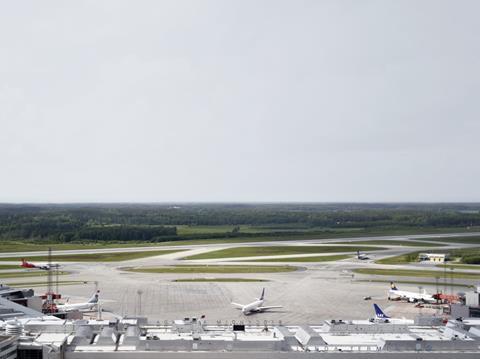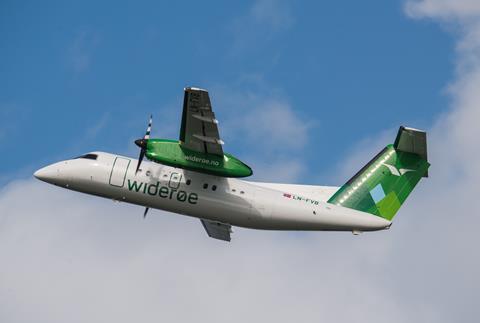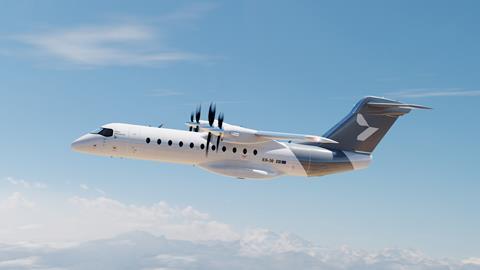For the past seven years the Swedish city of Gothenburg has been ranked number one on the Global Destination Sustainability Index, which collates and compares the environmental performances of around 100 major cities.
Gothenburg is also home to many high profile and innovative companies, among them Volvo, Ericsson and more recently Heart Aerospace, which is developing the hybrid-electric ES-30 commuter aircraft.

Recently and fittingly, this green and smart city hosted the transport ministers of Sweden, Norway, Denmark, Finland and Iceland to discuss common challenges in mobility, infrastructure and sustainability, including how to expedite electric-powered flights within and across their borders.
It is a fine balancing act between heavy reliance on air connections to distant or difficult-to-reach communities and stringent national imperatives to do so sustainably. But here there is political will to achieve both.
Two years ago, in Fredrikstad, Norway, the transport ministers agreed to work together to establish by 2030 the first fossil-free regional air routes in the Nordic nations.
In Gothenburg in August they built on that commitment, pledging to collaborate on regulations, promote and accelerate commercial e-flights, and collectively advocate to the EU and ICAO the need for greater support of electric aviation.
Also present were delegates of the Nordic Network for Electric Aviation, an initiative funded under the Green Mobility Programme of Nordic Innovation to provide a status update on e-aviation and identify obstacles and opportunities.

“Electric aviation is pivotal in the shift towards a fossil-free aviation sector, not least in the more sparsely populated parts of the Nordic regions,” declared the ministers in a joint statement.
“The Nordic countries have the potential to become pioneers for the establishment of commercial electric aviation on a larger scale. However, to fulfil the goals set forth in the Fredrikstad declaration, we must intensify our efforts.”
In line with an earlier decree by Norway that all domestic flights be electrically powered by 2040, Wideroe, the regional airline owned by Norwegian Air Shuttle, is already targeting 2028 for its first fossil-free route.
FOSSIL-FREE TARGET
“With over 40 airports, short runways, short distances and clean power, Norway is ideal for developing a network of fossil-free flights,” says the company. “Currently, there’s no off-the-shelf product where airlines can buy large emission-free passenger aircraft. But it’s coming.”
Heart Aerospace has announced orders, purchase options, and letters of intent for more than 560 of its four-engine, 30-seat planes, for which it is targeting certification in 2028 and entry into service by the early 2030s.
Before then, change will be incremental. Norway’s Scandinavian Seaplanes, for example, plans to retrofit six Cessnas from 2026 with battery-electric powertrains currently being developed by Dovetail Electric Aviation, an Australian-Spanish joint venture.
Ahead of the arrival of low-or-no-emission regional aircraft, Nordic airports, mostly state-owned, are progressing their own decarbonisation plans.

Sweden’s Swedavia achieved fossil-free operations four years ago at its 11 airports through use of renewable power to heat, cool and light its facilities and fossil-free fuels to run vehicles and equipment.
Norway’s Avinor, with 43 airports, is targeting 2030 for its fossil-free targets, but has already achieved significant milestones, including construction of a 10-acre solar park at Stavanger Airport and delivery of the world’s first blended sustainable aviation fuel at Oslo Airport in 2016.
SAF MANDATE
In 2020, Norway became the first country to mandate the use of blended SAF, beginning at 0.5%, followed closely by Sweden which went to 0.8%. Multiple plans are now underway or under consideration to produce SAF in Nordic nations.
Other industrial partnerships are forming to progress cleaner flight across the region, among them a collaboration between Airbus, Scandinavian Airlines (SAS), the Swedish energy group Vattenfall, Swedavia and Avinor to develop infrastructure in Norway and Sweden for hydrogen-powered flights.
Together, they will conduct a one-year study of more than 50 airports in both countries to project movements of future hydrogen-powered planes and volumes of the fuel needed at airports.
“We need a technological shift in aviation,” Wideroe says. “Easier said than done. It’s crucial to start flying this first-generation technology as soon as possible. We need that to establish business models, route maps, and the optimal playbook for running a safe and profitable zero-emission airline.”


























